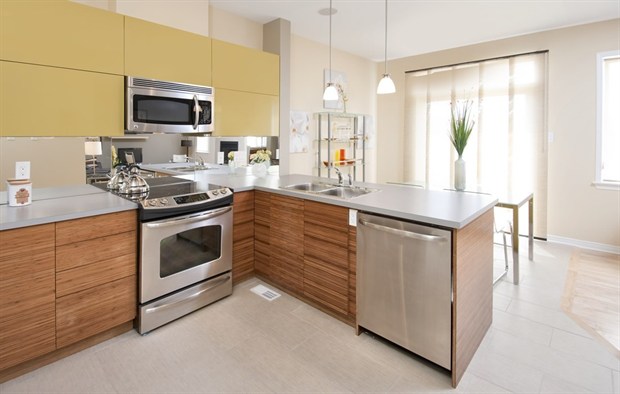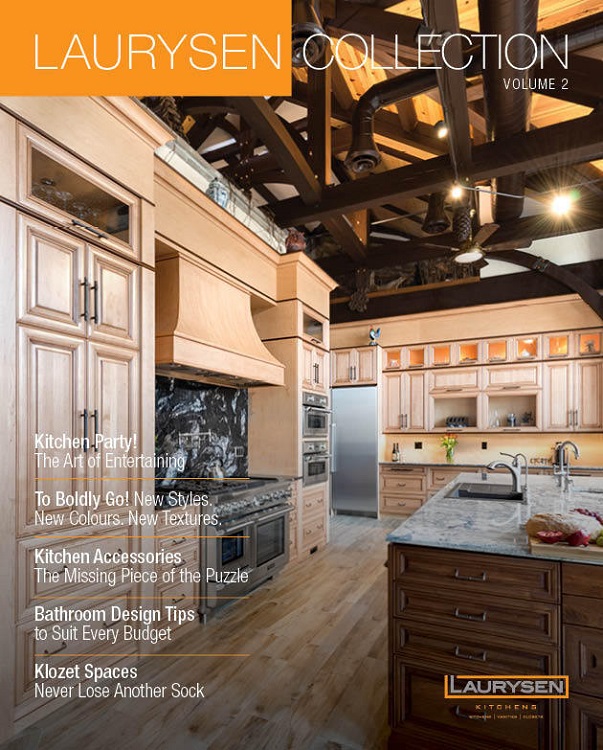At Laurysen, we know there are two aspects to a great kitchen, bathroom or closet: how it functions and how it looks. The same set of cabinets can be styled to look very contemporary or with timeless classic style. Neither is better; it’s all about what makes you feel more at home.
We are often asked what contemporary means by our customers, and what contemporary design looks like.
Definition of Contemporary
At its most basic, the word “contemporary” means current, or of the day. It’s always changing as new trends come and go.
This is a bit different from “modern”, which (in the design world) means design from the 1920’s through the 1950s. Some people use these words interchangeably but in the design world they are quite different. It’s easy to see why people confuse the two, because the modern design era had a huge influence on contemporary style.
In the modern era, society was changing and architects and interior designers were letting go of traditional looks. New materials (like plywood, plastics, and chrome) and manufacturing processes were being developed that made new types of furniture possible. Designers also used traditional materials in new ways.
The generations that had just come through two tragic World Wars and the Great Depression wanted to forget the past. They embraced the future, rocketry, and the possibility of space exploration. These shapes appeared in the design of everyday things, from sofas to dishware. Furniture was raised off the floor on skinny legs, and shapes became long, low, swooshy, or rounded like satellites.
How to Tell Contemporary Style
These days contemporary style borrows heavily from the modern era, but also incorporates the occasional traditional touch if that comes into vogue. But don’t be confused; architect Mies van der Rohe’s famous maxim “less is more” will rule the room. There will be little clutter, and any details that are not necessary are removed or downplayed.
Here are some examples.
Trim and Ceilings
- In contemporary rooms, this is as simple as possible. Trim, including baseboards, is the same colour as the walls. Ceilings can be lighter or painted a vibrant colour.
- In a traditional room, ceilings are white, and trim will be a lighter colour than the walls.
Furniture
- In a contemporary room, furniture will be a solid colour or simple pattern. It will have a clean simple shape.
- In traditional rooms, furniture is big and bulky and will have a more ornate pattern to the fabric.
As things are always changing there are no hard and fast rules, but a contemporary room will have a simple, sleek feel to it, even if there is an antique chair in a corner.
Contemporary Cabinets
When it comes to cabinets, contemporary style can be recognized by one or more of these qualities:
- A simple frame or no frame at all.
- Simple handles or pulls. Some may have none at all, like the pop-up cabinets below.
- A very high gloss finish.
- Sometimes no wood at all – perhaps a melamine or lacquer finish in a single vibrant colour.

You can view more of our contemporary cabinets here.
Traditional or Classic Cabinets
Traditional design elements reference a time when everything was made by hand. While there are many styles of traditional cabinetry, you tend to see these elements:
- A very noticeable and even prominently styled frame.
- Door handles or drawer pulls that have more than the bare minimum of detail.
- Ornamentation or details with the purpose of pleasing the eye or allowing the carpenter to show their skill. They have no usability benefits.

Here are some of our more traditional cabinet designs. To achieve a timeless look, some of our customers like traditional cabinetry in a room with contemporary elements in it.
It’s All Up to You
These days, anything goes. You can have any combination of the traditional and the modern, and it’s still contemporary. In the end, it’s all about having a kitchen you love.
If you’d like some help navigating design choices for your new kitchen, bathroom, or closet, our friendly design team is here to help.

